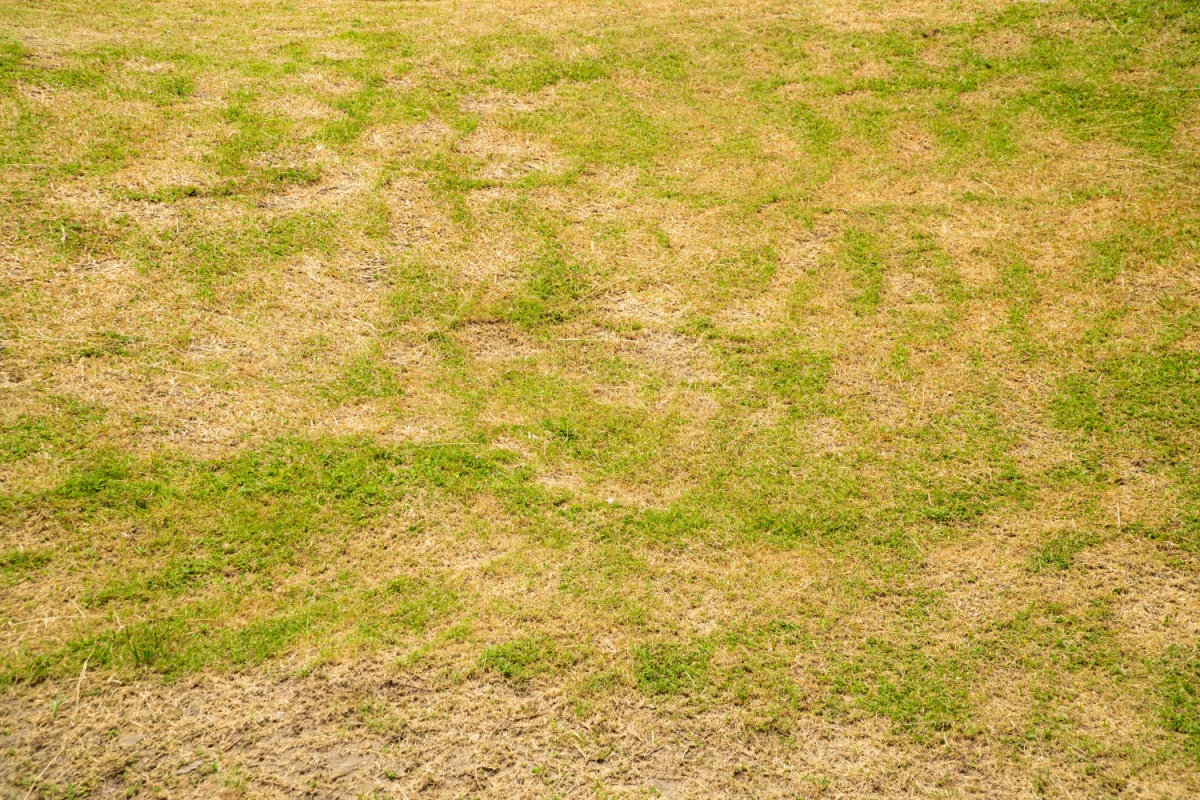
All homeowners desire to have a lush, green lawn, but sometimes, all they can achieve is patches of yellow or brown grass. While it’s tempting to throw your hands up in surrender, it’s important to pay attention to the color of your grass because it’s often trying to tell you something. The various shades of green, yellow, and brown that your lawn may display are indicators of your grass’s health, and you may need to take immediate action to address issues before they become serious problems.
Green Grass: The Ideal Color
A green lawn is the goal for many homeowners, and for good reason — it not only signifies a healthy lawn; it also looks incredibly inviting! Where exactly does the green color come from? It’s produced by chlorophyll, which absorbs red and blue wavelengths of light while reflecting green wavelengths. This process is crucial for photosynthesis, allowing the grass to convert sunlight into energy and grow healthy and strong.
Of course, it’s not enough to say you have “green grass.” We all know that every yard can vary in shade. Here’s a closer look at the various shades of green that your lawn might display:
Dark Green Grass
This is often considered the healthiest state for most grass types. Dark green grass usually indicates that your lawn is receiving adequate nutrients, particularly nitrogen, and has access to sufficient water and sunlight. Many plants, including cool season grasses like Kentucky bluegrass, thrive when they achieve this darker green color.
Light Green Grass
While still healthy, light green grass might indicate that your lawn could benefit from additional nutrients. It could also be a natural characteristic of certain grass species — in fact, many grass varieties, such as Bermuda grass, are naturally lighter in color, especially in full sun conditions. The light green color of your grass may even be a result of recent mowing.
Yellow Grass: Causes and Solutions
Yellow grass should catch your attention, as it often signals stress. One of the most common causes of yellowing grass is a lack of nitrogen. Nitrogen is crucial for chlorophyll production, which gives grass its green color. If your entire lawn is looking yellow, it might be time for fertilization.
Surprisingly, too much water can also cause the grass to turn yellow. Overwatering leads to poor soil aeration and even fungal growth, both of which can cause the discoloration of your grass. On the other hand, not enough water can also cause grass to turn yellow, especially during hot summer months.
To address yellow grass, consider the following steps:
- Test your soil to determine if there are any nutrient deficiencies.
- Adjust your watering schedule to ensure your lawn is getting enough water but not too much.
- Invest in lawn fertilization services to address the deficiency your grass is experiencing.
Brown Grass: When to Worry and How to Fix It
Brown grass can be alarming, but it doesn’t always mean your lawn is dying. Here are some reasons why your grass might be turning brown:
- Drought Stress: During periods of extreme heat or drought conditions, grass may go dormant and turn brown to conserve energy. This is especially common with warm season grasses.
- Pest Damage: Certain insects, like grubs, can cause patches of brown grass by feeding on the roots.
- Disease: Fungal diseases can cause brown patches in your lawn.
- Compacted Soil: If the soil is too compacted, roots can’t access the water and nutrients they need, leading to brown grass.
To address brown grass, consult a professional lawn care specialist. They can recommend the best treatment plan for your yard, whether that includes increasing watering frequency and duration, treating for pests and diseases, or aerating the compacted soil.
Maintaining the Health of Your Grass
Maintaining a healthy lawn involves understanding and addressing the various factors that affect grass colors and health. Here are some tips to keep your lawn in top condition and achieve that ideal grass color:
- Regular Watering: Water deeply and infrequently to encourage deep root growth. Adjust your watering schedule based on seasonal needs, increasing in the summer and decreasing in the fall and spring.
- Proper Mowing: Mow your lawn to the appropriate height for your grass type. Avoid cutting more than one-third of the grass blade at a time to prevent stress.
- Fertilization: Invest in professional fertilization services to help make your grass green. Lawn care experts will make sure your lawn receives a balanced fertilizer suitable for your grass species.
- Aeration: Have your lawn aerated at least once or twice a year to reduce soil compaction and improve root growth. This allows water, nutrients, and air to penetrate the soil more effectively.
- Weed Control: Invest in a weed control program to keep grassy weeds and broadleaf weeds at bay. Weeds compete with grass for nutrients, water, and sunlight, which can affect the overall color of your grass.
- Disease and Pest Management: Monitor your lawn for signs of disease and pests. Early detection and treatment are crucial for preventing widespread damage. Lawn care professionals can provide targeted treatments to address specific issues.
- Sunlight and Shade: Ensure your lawn receives adequate sunlight. For shaded areas, consider shade-tolerant grass varieties or thinning trees and shrubs to allow more light to reach the grass.
- Soil Health: Test your soil regularly to check pH levels and nutrient content. Amending your soil with lime or sulfur can help maintain optimal pH levels, while organic matter like compost can improve soil structure and fertility.
Lawn Specialties Is Your Path to a Green Lawn
Understanding the different colors of grass and what they mean is the first step toward achieving and maintaining a healthy lawn. Of course, maintaining a perfect lawn can be a time-consuming and complex task. If you’re feeling overwhelmed or simply want expert assistance in achieving that ideal grass color, don’t hesitate to reach out to Lawn Specialties. Our professionals can provide customized solutions for your specific grass type and local conditions. Contact us today to learn more about our lawn care services.

